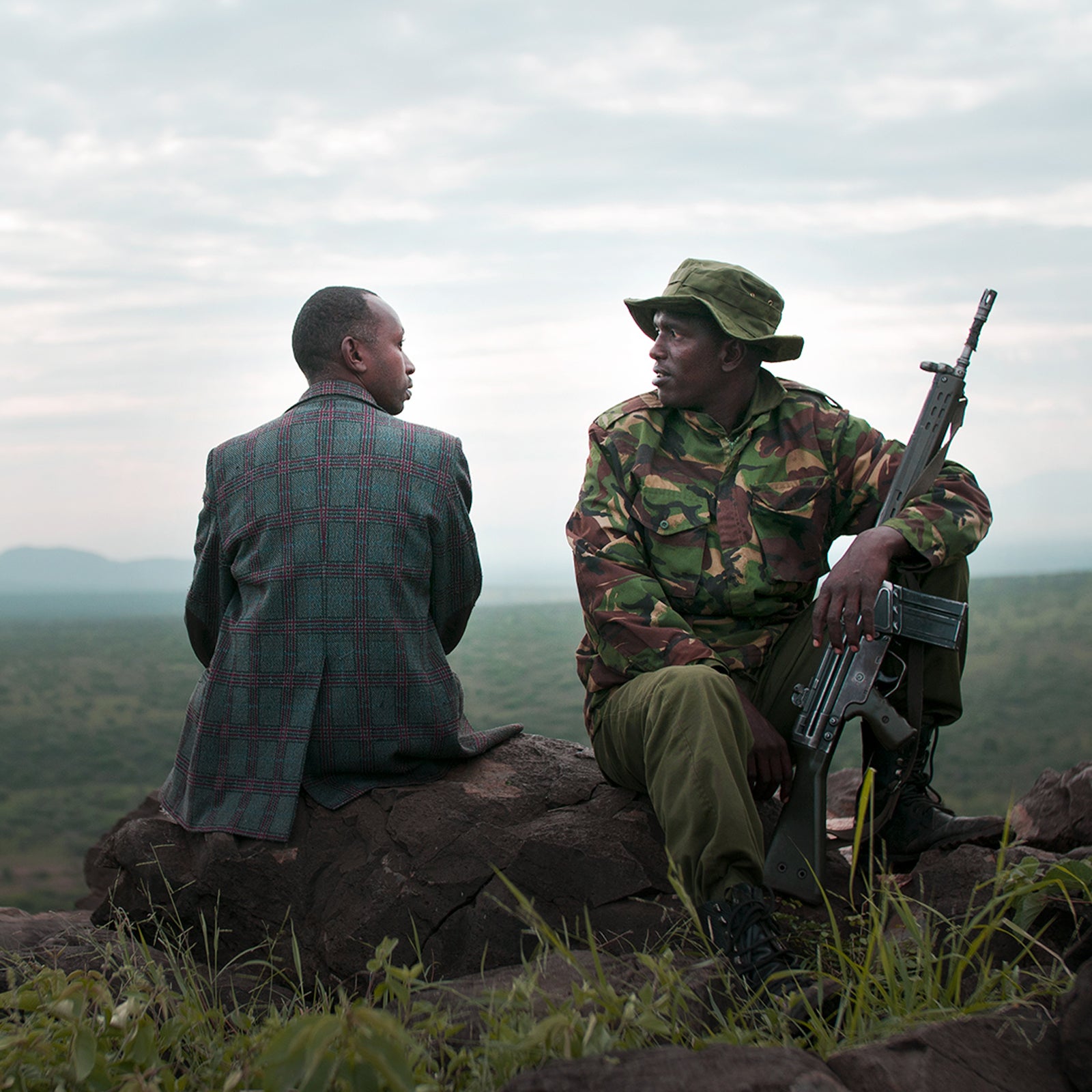What does desperation do to people? ThatŌĆÖs the question at the heart of , a documentary set╠²in Kenya╠²amid╠²a crackdown on poaching. The effort╠²reached a dramatic apex in 2016, when the government symbolically burned 105 tons of ivory to signal a zero-tolerance stance.
The film,╠²which was has been across the U.S. this winter, follows three men with different relationships to the deadly trade as they struggle to survive in a tightening market. LukasŌĆÖs family has hunted elephants for generations;╠²using╠²traditional knowledge, he finds his livelihood challenged by╠²stiff competition and stricter regulations. X, an ivory trader whose poacher dad was killed by rangers, hopes to build a more stable life for his son. And Asan, a wildlife ranger, hasnŌĆÖt been paid for his government work in months; his wife is pregnant, and heŌĆÖs becoming frantic with anxiety. X and Lukas hunt the endangered elephants that Asan (a former poacher himself) is trying to protect.
These╠²three men form╠²the backbone of the film╠²and the audienceŌĆÖs╠²window into the seldom-seen╠²action that surrounds big-game poaching. When Lambs Become Lions╠²reveals vivid personal histories and stakes on both sides of the trade. So much of the filmŌĆÖs╠²power comes from╠²the main charactersŌĆÖ╠²vulnerability, as they reckon daily with life-and-death choices regarding poaching, survival, and providing for their families. Sometimes Lukas, X, and Asan seem like tough guys, stone-faced and violent. Other times╠²they look like frightened kids, unsure and guessing.
Director Jon Kasbe╠²followed╠²Lukas, X, and Asan╠²for three years. The film owes its success to this feat of extended access, which helps viewers understand what drives people to hunt beautiful, prized animals in the first place. When Lambs Become Lions╠²reveals itself to be a devastating story not only because elephants die in it, graphically and violently, but also because it captures how HIV/AIDS, government overreach, and domestic abuse all╠²trickle down through╠²generations.
The filmŌĆÖs cinematography beautifully immerses us in the world of the protagonistsŌĆöfrom wide shots of the open savannah,╠²to action╠²scenes of Asan chasing poachers in a park,╠²to tight, close-up city shots of X and Lukas making their way to a club and╠²listening to Biggie. WeŌĆÖre right there for╠²elephant hunts╠²and government holdups. But we also see more quietly revealing moments: X sits with AsanŌĆÖs wife as she goes into labor; Lukas finds frogs whose toxins are used to╠²poison his arrows, so the elephants will die silently. ŌĆ£Better to kill the poacher and spare the elephant,ŌĆØ Asan says at one point, flipping through digital pictures of carcasses heŌĆÖs found in the bush.
To call When Lambs Become Lions╠²a documentary about elephant poaching hardly captures the story. The film becomes far more complicated than who survives, elephants or people. It's less about how poaching is carried out than why.


